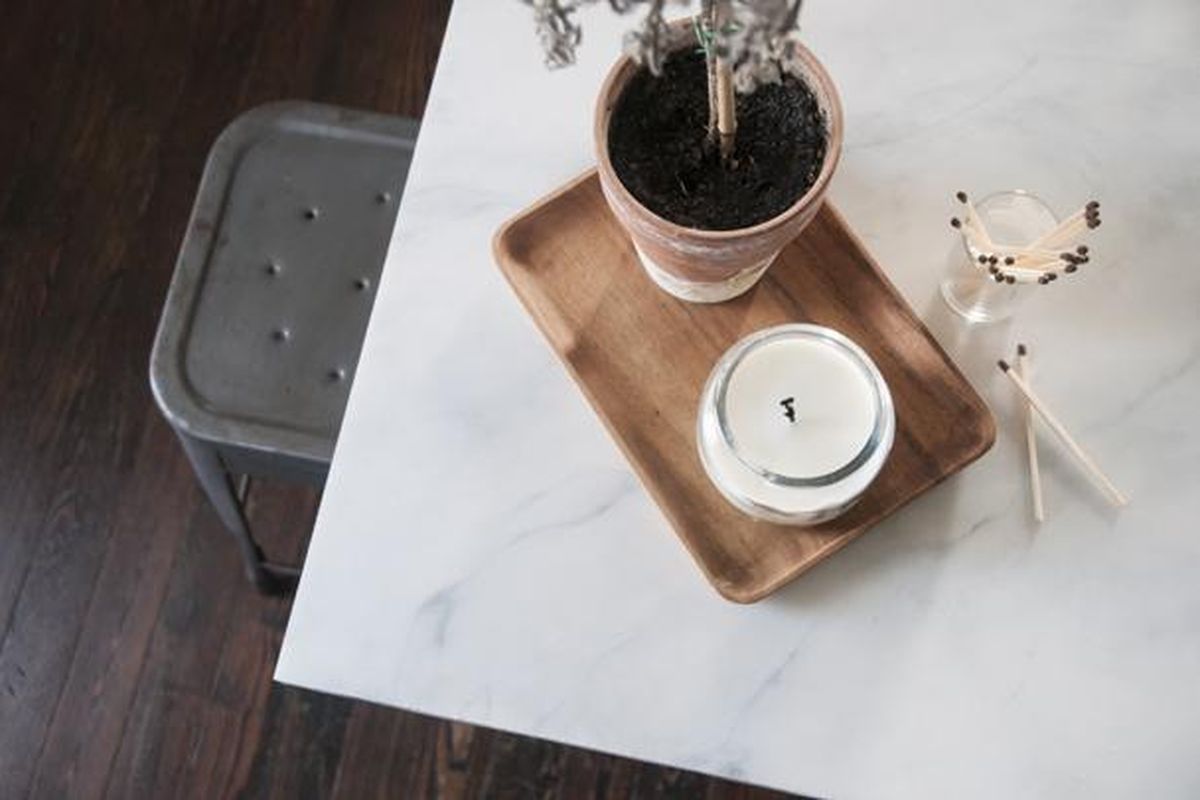Why some designers genuinely love faux materials

Lusting after exposed brick walls or a ceiling punctuated with rustic wood beams? Here’s an idea: Fake it.
Decorative architectural accents such as imitation stone countertops and hardboard panels of embossed “brick” are increasingly popular solutions in home renovations. To some, this might seem at odds with the larger design movement toward organic materials and artisan objects, but plenty of designers and DIY bloggers see nothing wrong with going faux.
Their motto is simple: What you lose in integrity, you make up for in savings, and these days, most folks can’t tell the difference.
Erin Souder, who runs the design blog and online store Earnest Home Co., redid her kitchen counter for $30 by painting a slab of butcher block that she had in her garage. The project was such a success that her “very discerning” mother-in-law mistook it for real marble. “That, my friends, is a win,” she wrote. Two years later, Souder says the counter has far exceeded her expectations.
“It’s held up phenomenally,” she said. “Red wine, coffee, you name it, I’ve spilled it, but it looks brand new.”
Many faux materials are more durable and low maintenance than the real thing. Wood-grain porcelain tiles offer the warmth of hardwood without the upkeep. Laminate countertops are more scratch- and stain-resistant. And faux wood beams are made of lightweight polyurethane, which means they’re easier to install and won’t crack, warp or rot.
The best part: You don’t have to be artsy like Souder to pull these projects off. Many imitation surfaces are designed for DIY beginners. Laminate countertop sheets, which are made using high-resolution digital prints of natural stone, can be glued right onto plywood or particleboard. And while marble and granite start at about $150 per square foot, laminate costs about half that for a 48-by-96-inch sheet.
Digital printing has also nudged the wallpaper industry back into the spotlight, and there is a similar desire to replicate rustic charm. Brewster has two new collections, Reclaimed and Restored, that were inspired by vintage architectural details such as antique tiles and pressed tin ceilings. One pattern, a dusty red brick in the Reclaimed line, features textured images of bricks that were taken from photographs of an 18th-century home in Newport, R.I. ($140 for a roll covering 56 square feet, brewsterwallcoverings.com).
Wall panels are surging in popularity thanks in part to HGTV’s Joanna Gaines, the “Fixer Upper” star who praises shiplap (wooden wall planks) for its subtle, outdoorsy warmth. She recently partnered with York Wallcoverings to develop her own shiplap-inspired wallpaper ($86 for a double roll, yorkwall.com). For more dramatic texture, try brick panels that measure about three-fourths of an inch thick. Red brick can make a dull home feel historic ($26 for a 4-by-8-foot panel, lowes.com), while white brick offers a more contemporary look ($105 per sheet, homedepot.com).
Chicago designer Kaylan Kane is partial to Phillip Jeffries’s Against the Grain wood-veneer wallcovering in Paulownia Parquet, an elegant, gray herringbone. She recently used it on an accent wall in an industrial high-rise that “looked straight out of ‘Fifty Shades of Grey,’ ” she said. “All it took was a touch of warm wood to soften it up.” The Against the Grain series is available only to the trade.
Kane’s firm, Olive Juice Interiors, caters to professionals in their 30s and 40s who live downtown, and she said simplicity is a big selling point. When clients wanted to redo their fireplace, opting for faux stone panels meant they didn’t have to reinforce the wall. “It wasn’t just cheaper, it was less work.”
Of course, simulating architectural features makes some designers cringe. “Call us traditionalists, but we’re not into faking it,” said Julie Massucco Kleiner of Massucco Warner Miller in Los Angeles. She says she prefers to use other tricks to distract from “less-than-stellar architecture,” such as a high window treatment to disguise a short window, or a collage of art to fill a blank wall.
That’s great advice, but it might not be enough to satisfy some people’s hunger for architectural charm or the appearance of “good bones.” For them, faux flair can seem like the most impactful solution: customization and character without the commitment, or the expense, of construction.
“It’s hard to argue with cost and convenience,” Kane said. “That’s the bottom line.”